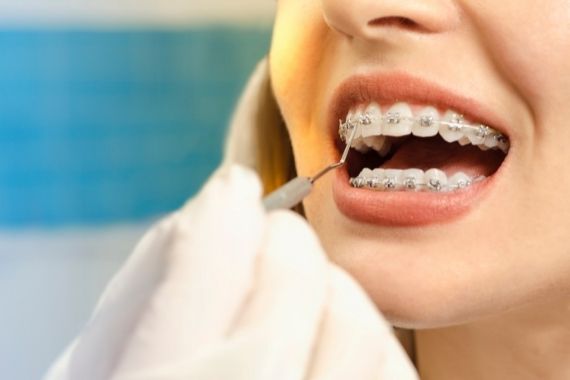Advantages of Brackets
Braces can be used to solve all types of orthodontic cases, both simple and complex cases, since they allow the movement of the teeth in a precise and controlled way. But more than the technique used or the type of braces, the most important thing in any orthodontic treatment is that it is performed by an orthodontic specialist, who has dedicated time to analyzing your case, making a good personalized diagnosis and a plan. of treatment appropriate to your needs.

Orthodontic visits
1st Visit: We will take the records to carry out the orthodontic study. To do this, we take photographs of your teeth, impressions of your bite, orthopantomography and teleradiography to be able to analyze your case in detail.
2nd Visit: After having studied your case, we will explain the results of the study, the approximate treatment time and the limitations of the treatment, if any.
3rd Visit: It is the longest visit of the treatment in which we will place the braces and explain to you the care you will have to take with them, as well as how to keep your mouth clean and healthy throughout the treatment.
4a Visit and progressive visits: These are the visits where we check the progress of your treatment and make sure that everything is going as planned. Depending on your case and the time of treatment, these visits can be monthly, biweekly or bimonthly.
Types of braces
– Metallic brackets. They are the most used and well-known orthodontic system. The arch or wire is attached to the bracket with elastic bands - colored or neutral - or metal ligatures. They require periodic visits, usually monthly or bimonthly, to change the ligatures or arches so that the movement of your teeth continues to evolve properly.
– Self-ligating brackets. They are low-friction metal brackets with the advantage that ligatures are not necessary and therefore the check-up visits are shorter and can be spaced further apart in time - every 2 months -. Furthermore, by reducing the force of friction, the treatments are more comfortable for the patient, in addition to facilitating hygiene by not carrying “extras” such as ligatures.
– Aesthetic braces. There are different types of aesthetic braces: ceramic ones – white – and sapphire ones – transparent. They are indicated for patients who for aesthetic reasons do not want to wear metal braces, but they are more fragile and delicate so they would be indicated in very careful patients and contraindicated in bruxist patients or with an increased overbite.
During treatment for any type of orthodontics it is even more important to maintain excellent oral hygiene. Poor hygiene and inflammation of the gums slow down orthodontic treatment, causing gingival inflammation and enamel lesions that can lead to the suspension of orthodontic treatment if adequate hygiene and care habits are not maintained.
Furthermore, in any orthodontic treatment with braces, you must be very careful with hard or sticky foods, which can loosen the brackets, and therefore interfere with the treatment, preventing its planned evolution.
To prevent this from happening, we will explain to you which foods you should avoid during your treatment and how to eat the rest of the foods so that your treatment goes smoothly.
The braces are placed on permanent teeth, therefore when we already have all the permanent teeth in the mouth we can start, this usually happens around 11-12 years of age. Before this age, other types of devices can be placed to solve problems that require early intervention.
Cementing is a completely harmless procedure on a clinical level. The removal of cement remains is carried out using our special tools that do not damage the tooth enamel.
In general, we can say that the visits are monthly with small differences in the different phases of orthodontics (at the beginning they are more spaced out and at the end more frequent).
The treatment may cause slight discomfort and discomfort due to the tension that the wire generates on the teeth. These discomforts usually appear a few hours after the visits, especially in the early stages of treatment when the teeth are being aligned.
The braces can rub against the tissues of the mouth, causing small ulcers that can be treated with various preparations that exist in pharmacies in gel and rinse form. Generally, all these discomforts are very mild and usually relieve themselves after a short time.
We offer several financing plans, with the option to finance part of the treatment or the entire treatment.
At the Ondarreta Dental Clinic we have a rigorous retention protocol for all patients, it is the final phase and also one of the most important to maintain the harmony and stability of your bite.

Can a dental implant cause rejection?
Even the best dental implants can cause patient rejection. Do you want to know how and why this happens? We tell you.
Read More
Everything you need to know about Invisible Orthodontics
Today's technology makes it possible to achieve the smile you have always wanted without having to live with traditional and unattractive appliances.
Read More
Myths about Dental Implants
Nowadays it is possible to place dental implants even if we have very little bone, since there are regeneration techniques.
Read More


